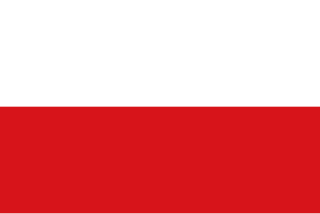 W
WCisleithania was a common yet unofficial denotation of the northern and western part of Austria-Hungary, the Dual Monarchy created in the Compromise of 1867—as distinguished from Transleithania.
 W
WThe Lands of the Bohemian Crown, sometimes called the Czech lands in modern times, were a number of incorporated states in Central Europe during the medieval and early modern periods connected by feudal relations under the Bohemian kings. The crown lands primarily consisted of the Kingdom of Bohemia, an electorate of the Holy Roman Empire according to the Golden Bull of 1356, the Margraviate of Moravia, the Duchies of Silesia, and the two Lusatias, known as the Margraviate of Upper Lusatia and the Margraviate of Lower Lusatia, as well as other territories throughout its history.
 W
WThe Austro-Hungarian Compromise of 1867 established the Dual Monarchy of Austria-Hungary.
 W
WCisleithania was a common yet unofficial denotation of the northern and western part of Austria-Hungary, the Dual Monarchy created in the Compromise of 1867—as distinguished from Transleithania.
 W
WThe (Princely) County of Tyrol was an estate of the Holy Roman Empire established about 1140. Originally a jurisdiction under the sovereignty of the Counts of Tyrol, it was inherited by the Counts of Gorizia in 1253 and finally fell to the Austrian House of Habsburg in 1363. In 1804 the Princely County of Tyrol, unified with the secularised prince-bishoprics of Trent and Brixen, became a crown land of the Austrian Empire in 1804 and from 1867 a Cisleithanian crown land of Austria-Hungary.
 W
WThe Czech lands or the Bohemian lands are the three historical regions of Bohemia, Moravia, and Czech Silesia. Together the three have formed the Czech part of Czechoslovakia since 1918, the Czech Socialist Republic since 1 January 1969 and the Czech Republic since 1 January 1993.
 W
WThe Kingdom of Galicia and Lodomeria, also known simply as Galicia or Austrian Poland, was established in 1772 as a crownland of the Habsburg Monarchy as a result of the First Partition of Poland. After the Third Partition of Poland in 1795, it became a kingdom under Habsburg rule. In 1804 it became a crownland of the Austrian Empire. From 1867 it was a Polish-administered autonomous crownland under Cisleithanian Austria-Hungary, until its dissolution in 1918. The country was carved from the entire south-western part of the Polish–Lithuanian Commonwealth. Among the many ceremonial titles of the princes of Hungary was "ruler of Galicia and Lodomeria". Following the Napoleonic Wars and the Congress of Vienna, the Austrian Empire ceded portions of Galicia to the Russian Empire, West Galicia and Tarnopol District.
 W
WThe Margraviate of Moravia was one of the lands of the Bohemian Crown existing from 1182 to 1918. It was officially administrated by a margrave in cooperation with a provincial diet. It was variously a de facto independent state, and also subject to the Duchy, later the Kingdom of Bohemia. It comprised the region called Moravia within the modern Czech Republic.
 W
WThe internal official name "Lands of the Crown of Saint Stephen" denominated the Hungarian territories of Austria-Hungary during the totality of the existence of the latter. This union is sometimes denominated "Archiregnum Hungaricum", pursuant to Medieval Latin terminology. Pursuant to Article 1 of the Croatian–Hungarian Settlement of 1868, this territory was officially defined as "a state union of Kingdom of Hungary and Triune Kingdom of Croatia, Slavonia and Dalmatia". Dalmatia actually lay outside the Lands of the Crown of Saint Stephen and was part of the Austrian half of the Empire, but was included in the name due to a long political campaign seeking recognition of the Triune Kingdom which consisted of a united Croatia, Slavonia and Dalmatia. The Lands of the Crown of Saint Stephen disintegrated after the dissolution of Austria-Hungary.